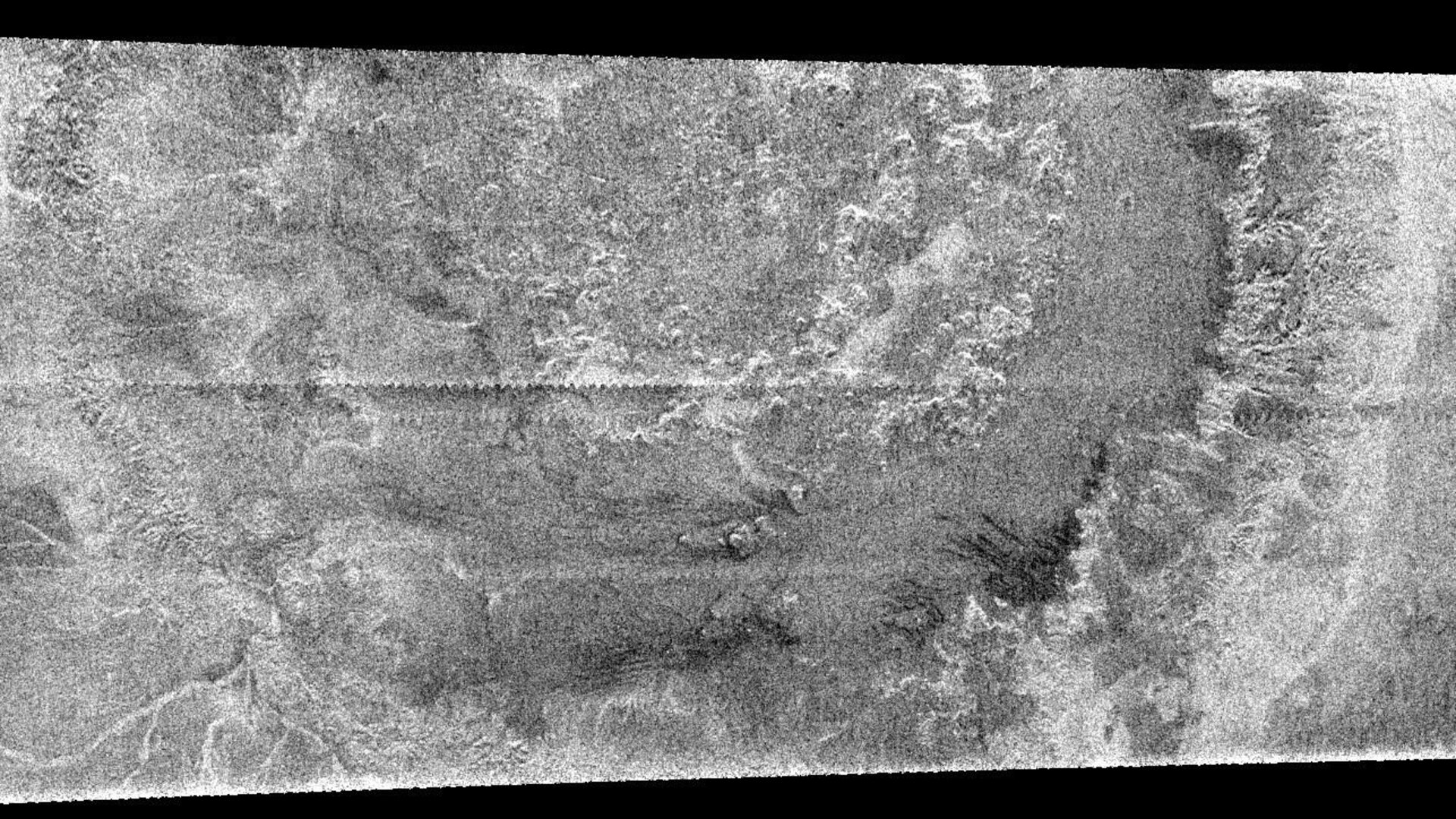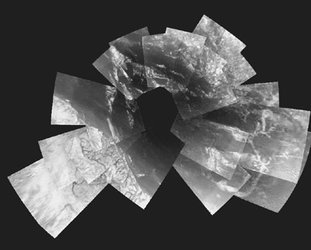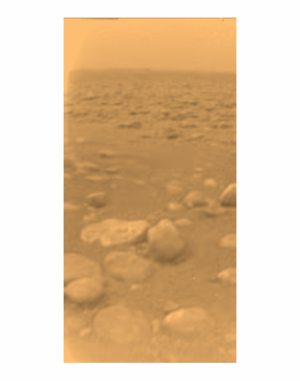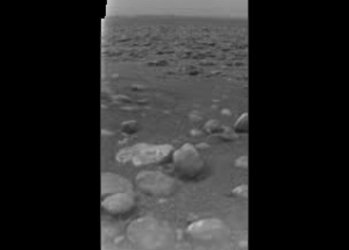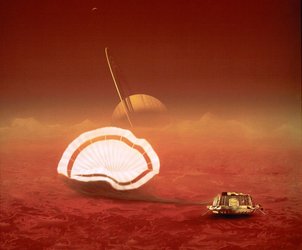Huge crater seen during Titan fly-by
A giant crater about the size of the Netherlands was spotted on Titan by the NASA/ESA/ASI Cassini spacecraft as it made another planned fly-by.
The huge impact crater was seen by the Cassini radar instrument on Titan as the spacecraft flew within 1577 kilometres of the moon's surface on 15 February 2005.
This is the third close Titan fly-by of the mission and only the second time the radar instrument has examined Titan. It is the first time that the areas covered by Cassini's radar and the imaging camera overlapped. This overlap in coverage should be able to provide more information about the surface features than either technique alone.
The crater identified by the radar has an outer diameter of 440 kilometres and was seen before with Cassini's imaging cameras, but not in this detail. It resembles a large crater or part of a ringed basin, either of which could be formed when a comet or asteroid tens of kilometres in size crashed into Titan.
This is the first impact feature identified in radar images of Titan. The surface of Titan appears to be very young compared to other Saturnian satellites. In Titan's case, debris raining down from the atmosphere or other geological processes may mask or remove the craters.
The pattern of brightness suggests that there is topography associated with this feature; for example, in the centre of the image there appear to be mounds each about 25 kilometres across. Since they are dark on their lower edges that face away from the radar and bright on the opposite face, they must be elevated above the surrounding terrain.
The Cassini-Huygens mission is a co-operative project of NASA, ESA and ASI, the Italian space agency.
Credit: NASA/JPL


